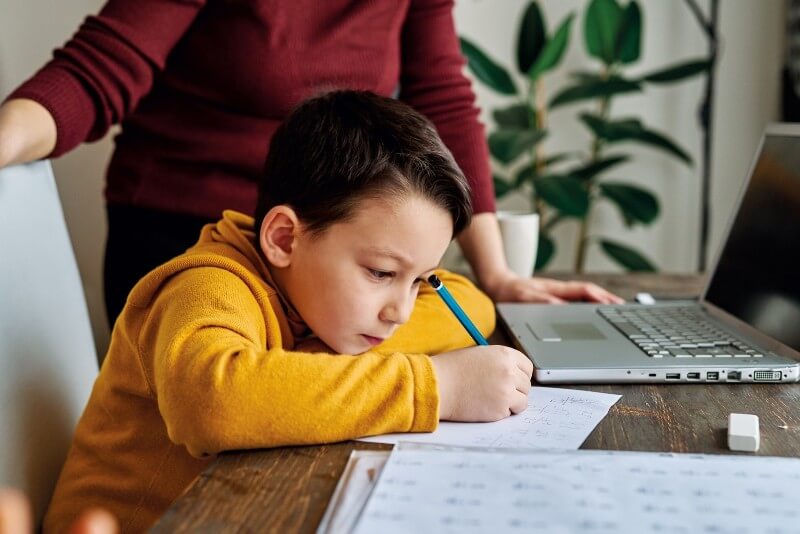Children as young as 4 years old show evidence of a network in the brain found in adults that tackles difficult cognitive problems, a new study found.
The multiple demand network helps people focus their attention, juggle several things in memory at the same time, and solve difficult problems like those involving math.
And while this network is not fully developed in kids, the study showed it operated similarly as it does in adults, said Zeynep Saygin, senior author of the study and assistant professor of psychology at The Ohio State University.
The study involved adults and 4- to 12-year-old children whose brains were scanned in an fMRI while they tried to complete a difficult task.
“We found that the multiple demand network was a distinct network even in young children, and was separate from the language network, just as it is in adults,” Saygin said.
“That was something that wasn’t known for sure. One alternative would have been that it takes time for these separate networks in the brain to differentiate themselves in children, but that’s not what we found.”
The study was led by Elana Schettini, a graduate student in psychology at Ohio State, and the results were published online recently in the Journal of Neuroscience. Ohio State graduate student Kelly Hiersche was also a co-author.
The results may help identify disruptions in the neurodevelopment of cognitive control among clinical samples, such as children struggling with ADHD, conduct disorder, or brain injuries, which could eventually inform treatment development.
“By identifying typical variability in the relationship between neural activation and performance on task, we can gain a better understanding of what is considered normal vs. abnormal” Schettini said.
The study involved 44 adults 18 to 38 years old and 37 children aged 4 to 12.
While being scanned in the fMRI, study participants were given a relatively difficult task: They were shown a series of grids containing nine to 12 squares, some of which were blue. They were then shown two grids, and they had to choose which one matched the sequence of blue squares they had seen in earlier grids. Children were given easier trials than adults.
The same participants also completed a language task where they listened to meaningful sentences and control conditions. In adults, the language brain network is spatially adjacent to, but separate from, the multiple demand network. But children’s language skills are also still developing and so it was unclear whether the multiple demand network also supports this skill as it develops.
Results showed that the same area of the brain – the multiple demand network, located in the frontal and parietal cortices – was activated in both children and adults when they completed the challenging task, and not at all activated for the language task.
There were reasons to expect that kids wouldn’t have a multiple demand network similar to adults, Saygin said.
“We know that children aren’t always good at knowing what to focus on, they are distracted easily, and they don’t always do well when presented with difficult problems. So it wasn’t a given that they would be using the same multiple demand network that adults use,” she said.
“But even in 4-year-olds this network is pretty robust and is very distinct from the language network.”
There were some differences from adults. The response magnitude seen in the brain was smaller in children as they tried to solve the task, indicating it takes years for the brain to mature and “ramp up” to adult levels, she said.
But even in children, multiple demand brain activation reflected how hard they tried and how well they performed during the task, regardless of age; individual variability in performance was reflected in the brain activation at all ages.
“The findings give us a better understanding of how high-level cognition emerges in humans and could help us design interventions for when people have issues with cognitive control,” Saygin said.
The researchers received support from Ohio State’s Center for Cognitive and Behavioral Brain Imaging and the Ohio Supercomputer Center. Saygin was supported by the Alfred P. Sloan Foundation and the Chronic Brain Injury Initiative at Ohio State.


